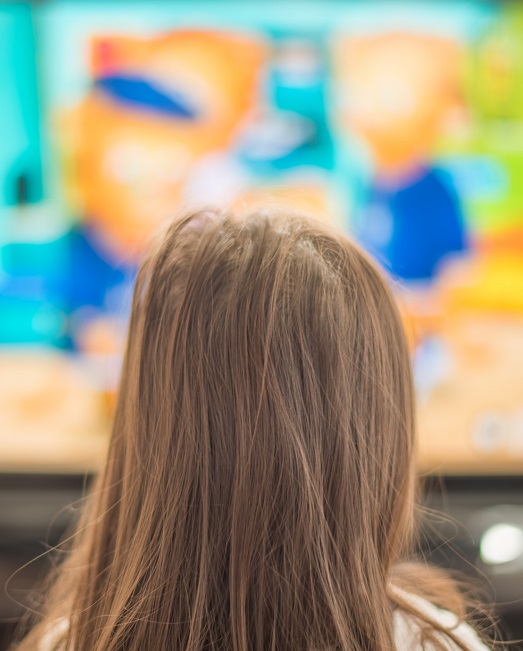Lifestyle
Copyright@ Australian Catholic University 1998-2025 | ABN 15 050 192 660 CRICOS registered provider: 00004G | PRV12008
Copyright@ Australian Catholic University 1998-2025 | ABN 15 050 192 660 CRICOS registered provider: 00004G | PRV12008

The much-celebrated Swiss physician and naturalist, Conrad Gessner, was well known for his dramatic declaration that a ubiquitous new technology would be “confusing and harmful” to the human mind, thereby leading society into ruin. And Gessner wasn’t the first to warn of the dangers posed by this innovation. Others, like the Italian writer Filippo de Strata, asserted it would “corrupt susceptible hearts”. So, which harmful invention were these scholars railing against?
No, it wasn’t smartphones or AI chatbots, those useful-but-perilous digital technologies that provide a portal to a bottomless pit of information. The cause of their concern was another innovation that allowed people to gain and share knowledge more quickly and widely: the mechanical printing press.
In the 15th and 16th century, hysteria reigned around the overabundance of books – and information – that would result from the proliferation of this device.
Similar concerns have since been raised about other emerging technologies and practices. Schooling, for instance, would “exhaust children’s brains”, and radio would cause inattention and impaired learning.
Today, the same is being said about a more recent technological bogeyman: screen time. So widespread is the worry that an editorial published in Nature labelled the effect of electronic screen exposure on children as “a defining question of our age”.
Which is why a group of 21 researchers, led by ACU’s Dr Taren Sanders, sought to add to the literature with the most comprehensive meta-analysis of screen time research ever undertaken.
The world-first umbrella review took in 70 years of research and a whopping 2,451 studies involving almost two million children and teenagers, providing a robust and far-reaching understanding of the impact of screen time on children’s health, education, social development, and overall wellbeing.
Its key finding? Excessive screen exposure can be harmful to children. But in most cases, the impact is small.
This suggests that the current hysteria around screen time may be misplaced.
“There are all these examples of new technologies emerging and people being a bit fearful and hysterical about them, and it’s easy to look back and say, ‘Well, that was a bit silly of us’, but it appears to be harder to make those judgments in the moment,” says Dr Sanders, a senior research fellow at the Institute for Positive Psychology and Education.
“Certainly if you look at the evidence we’ve gathered, I think it would be reasonable to step back and decide the extent to which we should be agonising over these things.”
Need to see some examples of fear and panic over screen use and the effect it’s having on children? You don’t have to look very far.
Screen time is “digital heroin”, screams one headline, turning young people into “psychotic junkies”. Another warns it is “destroying kids’ minds and bodies”, affecting behaviour, cognition, sleep, and physical health.
Such examples reflect a concern that many modern-day parents have, that screens are melting kids’ brains.
Dr Sanders points to a survey run by The Royal Children’s Hospital in Melbourne showing that screen time is the number one concern for parents, with more than 90 per cent reporting it as a problem.
“You expect that such a high level of concern would link to very clear evidence of harms, and that’s not really what the data shows,” he says.
In reality, the evidence supporting these concerns is startlingly scarce.
That’s not to discount the fact that some studies exploring the effects of screen time on children and adolescents have had worrying findings.
In 2023, a Japanese study reported a link between screen use in young infants and developmental delays in communication and problem-solving at a later age. Another recent study found that digital devices have an adverse effect on reading comprehension, while earlier research showed that brain connectivity in children was increased by reading books, and decreased by exposure to screen-based media.
Partly as a result of these negative associations, public health messaging around screen use is universally cautious. In Australia, the national guidelines recommend no screen time for children under the age of two, no more than an hour a day for children under five, and no more than two hours a day for those between five and 17.
This sends a clear signal that screen use is something parents should be concerned about.
And yet, the evidence unearthed by Dr Sanders and his co-authors suggests that regular exposure to screens may not be harmful to child behaviour and mental health – provided it is interactive, educational and does not reach extreme levels – and in some cases, may be beneficial.
“If parents are sensible and are making good content decisions like they do when choosing the books their children read, there’s probably less risk here than we originally thought,” says Dr Sanders, who outlined the review’s findings in an article for The Conversation.
“We’re not saying that unlimited screen time is a good thing – that’s not what we’re encouraging. But in moderation, screen time is likely not the bogeyman many parents think it is.”
Part of the problem with both the scientific literature and the public messaging on screen use is the use of the catch-all term “screen time”, which lumps very different screen-based activities – from television to TikTok – together.
This practice does not allow for a distinction between interactive screen time, like learning apps and educational video games, and passive screen time, like watching YouTube clips or browsing social media.
“Nobody would argue that FaceTiming grandma is the same as playing a violent video game on your phone, and it seems silly to group these things together and assume they’re going to have the same contribution to children’s outcomes,” Dr Sanders says.
His study found that when research examined screen use in a general sense, failing to specify the content, context or device, there was strong evidence showing harmful associations with learning, literacy, physical health and depression. When studies were more nuanced, however, they produced a more complex picture.
For example, children who watch general television programs and movies are more likely to have poorer literacy skills and academic performance – but this turns into a positive if the child watches educational programs (like Sesame Street and its modern-day equivalents), or if a parent watches the program with them. The practice of “co-viewing”, as it is known, makes watching television an active process rather than a passive one.
“My son’s favourite TV show at the moment is Bluey, and if I’m there watching it with him, it gives me the opportunity to provide labels to things he sees on the screen, so he can comprehend the information and then process it,” says Dr Sanders, pointing out, however, that the positive development outcomes of co-viewing require genuine parental involvement.
“If a parent is sitting on the couch glued to their own phone, not paying attention to the television program, there’s no reason to think that this would somehow improve the child’s literacy skills.”
Rather, parents must take a proactive approach, asking questions that test a child’s knowledge, prompting a greater level of engagement with the content.
“I might point to the screen and ask my kid, ‘What do you think Bluey’s feeling right now? Why do you think she’s feeling that way?’ That kind of engagement can help the kid to develop language and vocabulary, which in turn might help with literacy.”
Reassuringly, in examining educational outcomes, the review found a very low negative correlation between learning and general screen use, videos games, and television viewing.
This means that children and adolescents who engage in these forms of screen use at manageable levels – say, an hour or two a day – are unlikely to experience and observe impaired learning. The review found a correlation co-efficient of 0.2, which is about the same as the relationship between height and intelligence: there is indeed a link, but mainly in a technical sense.
Dr Sanders adds, however, that this relationship is linear, meaning that the more television the child watches, the stronger the negative effect will become.
“The fact that these effect sizes were so tiny means they probably don’t matter all that much with low doses,” he says. “But as the dose gets higher, and as the child is on their screen for hours on end, it certainly does matter.”
Where the picture starts to be less encouraging is when social media comes into play. This is one form of screen time that shows consistent links with a range of negative outcomes – including increased risk of depression and other mental health problems – with no indication of potential benefit.
Dr Sanders therefore recommends that official guidelines are adapted to discourage high levels of social media use, instead promoting the use of educational apps and video games.
“If the advice was more nuanced and explicit about the types of screen time that can be harmful, rather than being so focused on the amount of time spent on a device, we might have more success in steering kids away from the activities linked to these harmful associations,” he says.
But while Dr Sanders and his co-authors are united in calling for calm on screentime concerns, this is not a signal to parents to “open the floodgates”.
“The advice I always give parents is that, rather than stressing too much about the quantity of the screen time, think more about the quality,” Dr Sanders says. “If it’s interactive and educational and you are involved and the use doesn’t reach extreme levels, it’s probably okay. You won’t ruin your kid’s education or fry their brains.”
Dr Taren Sanders is Deputy Program Lead at ACU’s Institute for Positive Psychology and Education (IPPE). His research focuses on what determines physical activity behaviour in children and young people, the benefits of physical activity, and how measurements of physical activity can be improved.

Copyright@ Australian Catholic University 1998-2025 | ABN 15 050 192 660 CRICOS registered provider: 00004G | PRV12008